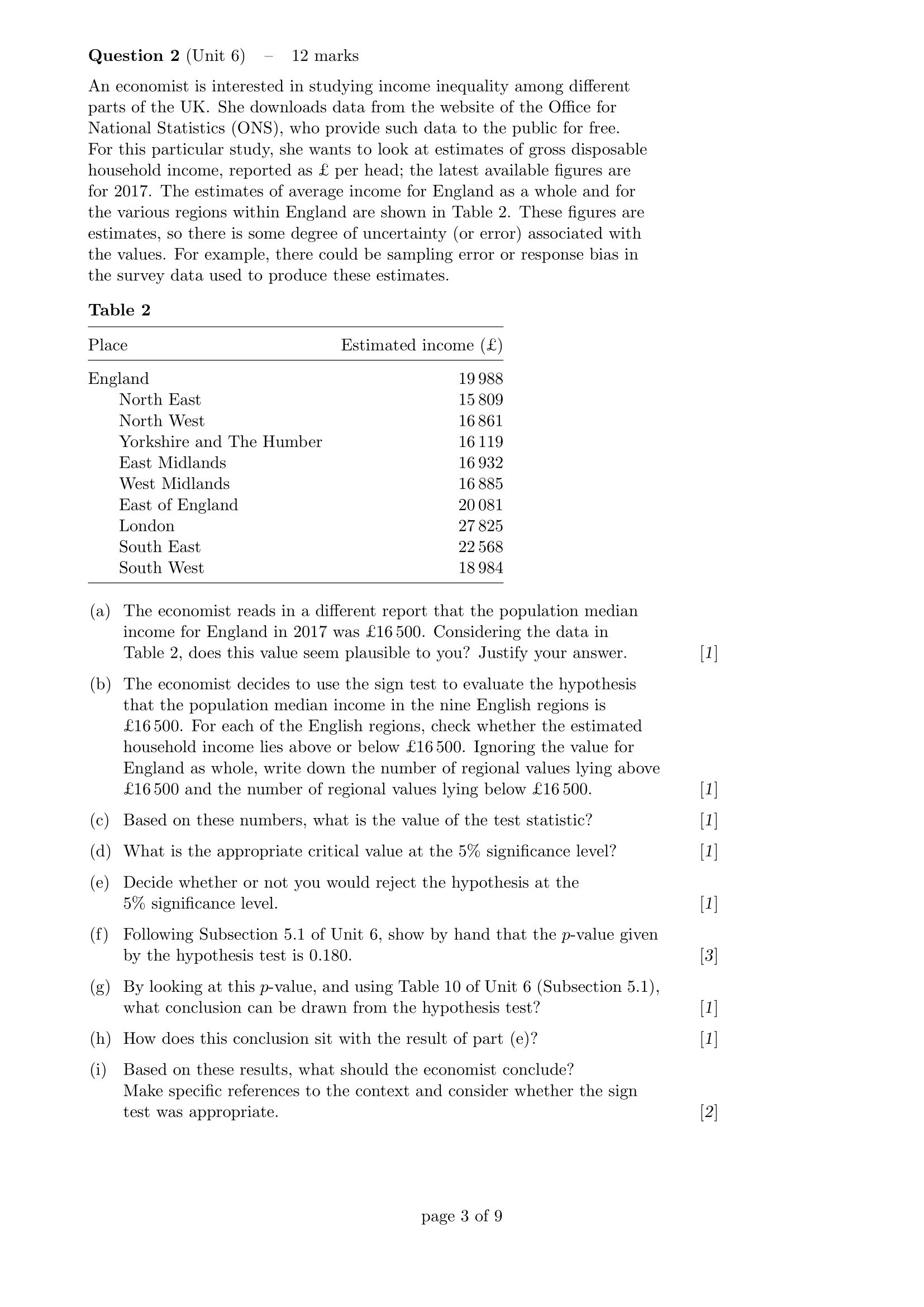Question 2 (Unit 6) 12 marks An economist is interested in studying income inequality among different parts of the UK. She downloads data from the website of the Oice for National Statistics (ONS), who provide such data to the public for free. For this particular study, she wants to look at estimates of gross disposable household income, reported as .13 per head; the latest available gures are for 2017. The estimates of average income for England as a whole and for the various regions within England are shown in Table 2. These gures are estimates, so there is some degree of uncertainty (or error) associated with the values. For example, there could be sampling error or response bias in the survey data used to produce these estimates. Table 2 Place Estimated income (.6) England 19 988 North East 15 809 North West 16 861 Yorkshire and The Humber 16 119 East Midlands 16 932 West Midlands 16 885 East of England 20 081 London 27 825 South East 22 568 South West 18 984 (a) The economist reads in a different report that the population median income for England in 2017 was 16 500. Considering the data in Table 2, does this value seem plausible to you? Justify your answer. (b) The economist decides to use the sign test to evaluate the hypothesis that the population median income in the nine English regions is 16500. For each of the English regions, check whether the estimated household income lies above or below 16 500. Ignoring the value for England as whole7 write down the number of regional values lying above 16500 and the number of regional values lying below 16500. (c) Based on these numbers, what is the value of the test statistic? (d) What is the appropriate critical value at the 5% signicance level? (e) Decide whether or not you would reject the hypothesis at the 5% signicance level. (f) Following Subsection 5.1 of Unit 6, show by hand that the pvalue given by the hypothesis test is 0.180. (g) By looking at this pvalue, and using Table 10 of Unit 6 (Subsection 5.1), what conclusion can be drawn from the hypothesis test? (h) How does this conclusion sit with the result of part (e)? (1) Based on these results, what should the economist conclude? Make specific references to the context and consider whether the sign test was appropriate. page 3 of 9 [1] [ll [1] [1] [ll [3] [ll [1] [2]







